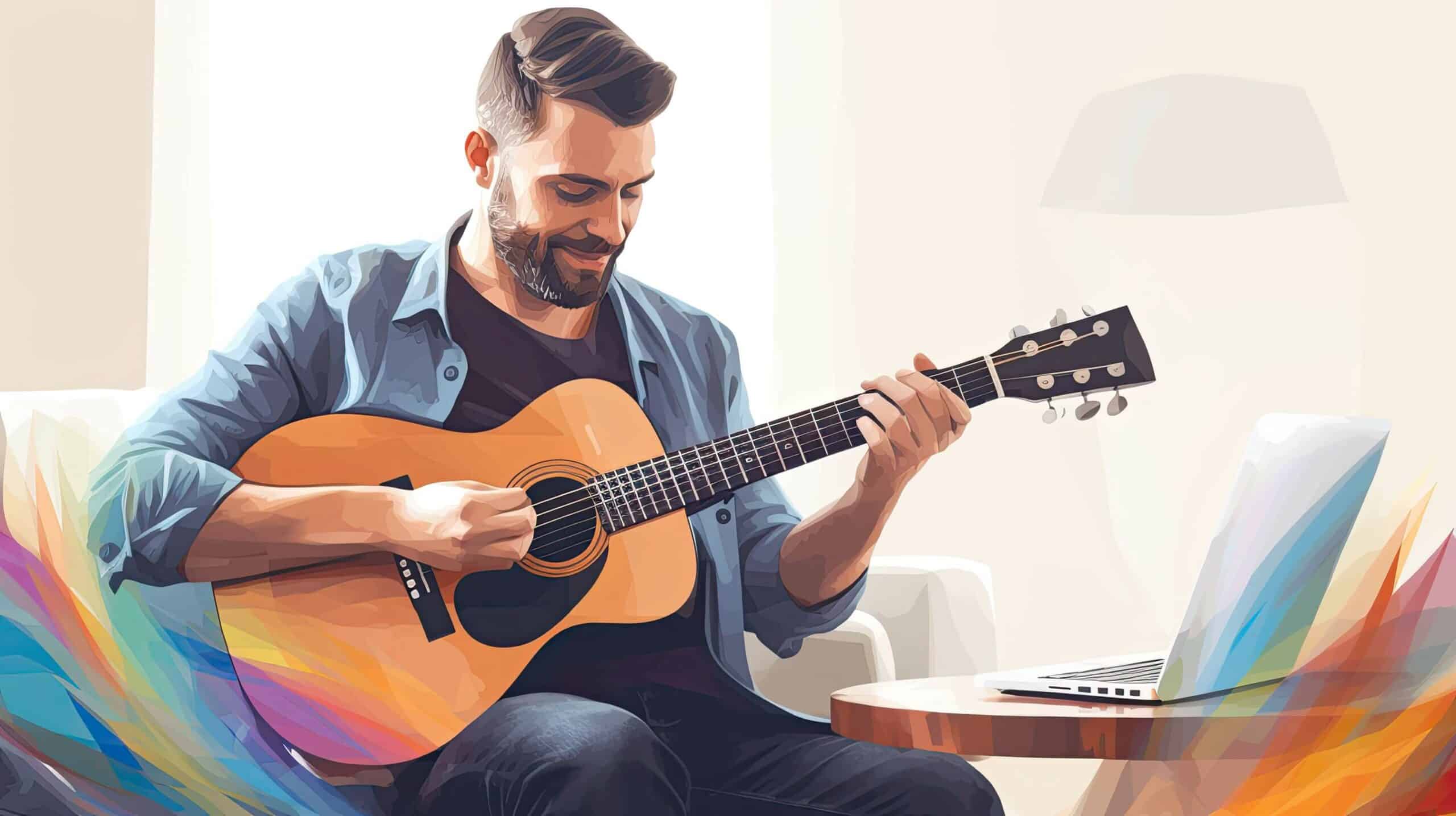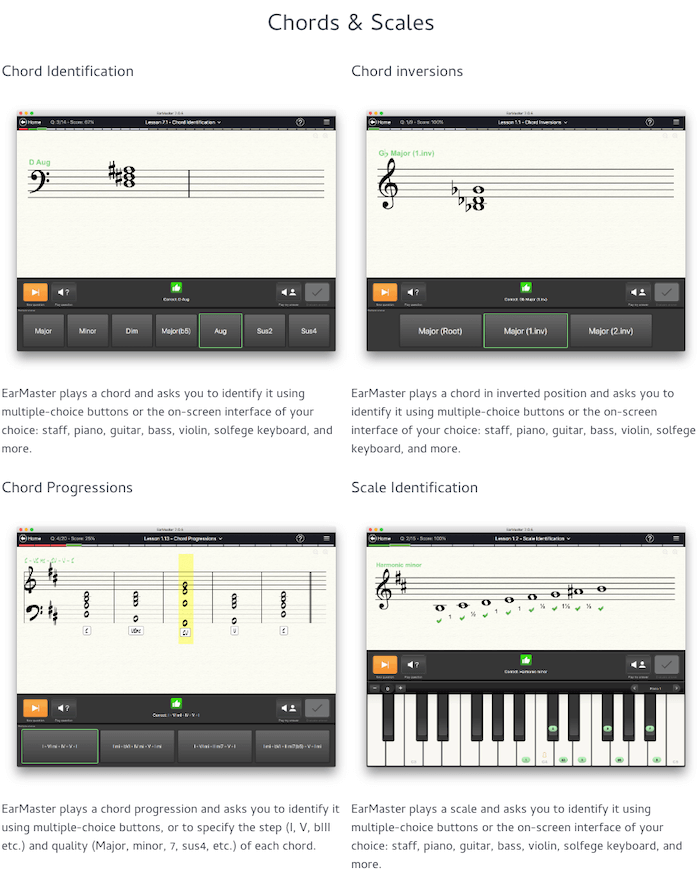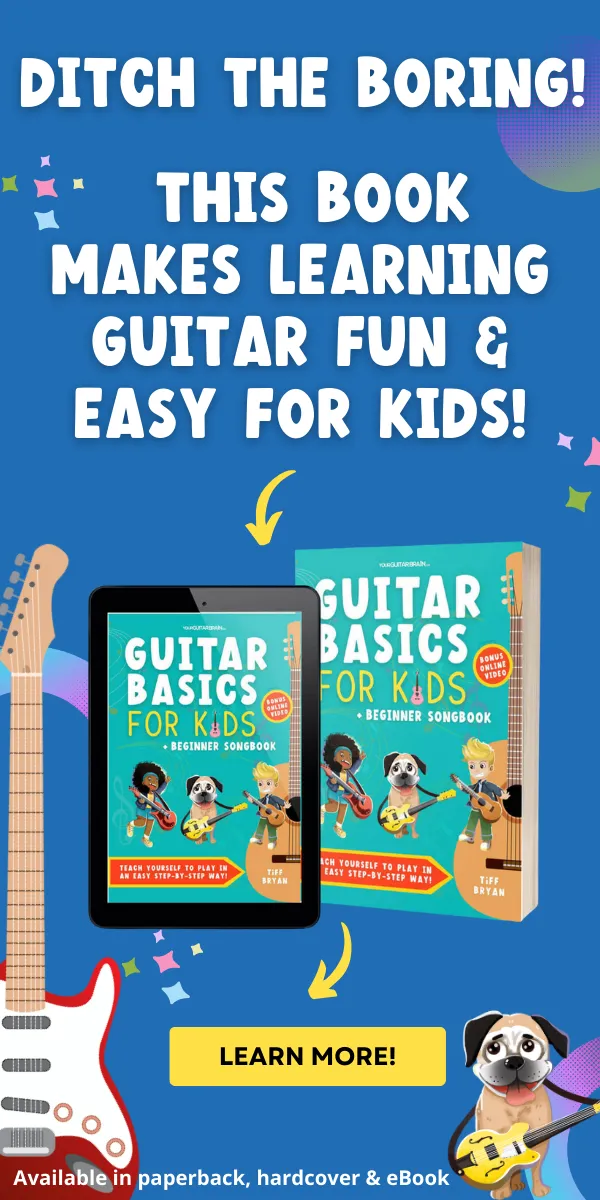Master the skill of working out the parts of a song and playing them on guitar with confidence and ease.
- Further reading: 5 Most Common Chord Progressions in Music
- Related post you may like: What Music Theory Should you Know?
“How do I play along with a song on guitar? I find it hard to pick the pattern out of all the instruments playing at the same time.”
Many guitarists struggle to sync what they’re playing with a song recording or backing track. If that’s you, stick around because, in this post, I give you 6 tips you can put into action today to help you get the hang of playing along with songs on your guitar.
(The bonus tip at the end of tip number 6 is worth its weight in gold.)
Table of Contents
Tip 1 – Get into the groove
If you don’t make the effort to practice you guitar with a metronome, you’ll find playing along to a song recording challenging until you change things up.Start simple; try this 3-step exercise:
Step 1: Put a metronome on 90 bpm and tap the top of your guitar in time to the beat. Once you have done this for a while move to step 2.
Step 2: Play down strums in time with each metronome beat for 60 second intervals.
Step 3: Put the song on you want to learn and play down strums on each beat of the bar. If you find it tricky to find the timing, stop playing and tap your guitar on the beat for a minute, then try with the song again.
Here’s the game changer; pop your phone on record for 30 seconds and listen back. Notice your tendency to speed up?
It’s easy to convince yourself your timing is good if you never listen to yourself playing. Don’t beat yourself up if you listen back and your timing is all over the place. Poor timing is the foremost bad habit guitarists have.
Keep at it.
The more you practise this simple metronome exercise, the better your feel for staying in time will be when you play along to an actual song.
Tip 2 – Repeat, repeat, repeat
To make playing along to music on your guitar more straightforward, you need to know the song inside out. Listen to the song over and over to get familiar with the melodies, structure and rhythm (see tip 5 and tip 6 also).
Your ear is like any muscle; the more you use it, the stronger it gets.This tip may seem obvious, but not getting to know the song is the downfall of the guitarist who says they battle to learn a song by ear.
When you try to jump straight in without listening to the song properly, or worse still – don’t even listen to the piece once, you’re setting yourself up to fail.
Pro Tip
Even if you've known your favourite song for years, don't skip the step of learning how to play it. You'll be surprised at what you hear when you focus on the music instead of just listening to it.
Tip 3 – Don’t be a lone wolf
Many of my guitar students struggle to pinpoint the patterns in songs at first (be it the strumming or picking pattern). To help them develop the skill, I show them what to do step by step with practical help.
With that in mind, this brings us to tip number two for how you learn to play along to a song recording: get a highly-rated guitar tutor to help you.
Most self-taught guitarists find working out parts in a song by ear a nightmare because they’re going it alone.
Make your life easier and get a teacher to walk you through the steps with in-person demonstrations and feedback. If you’re not in a position to take guitar lessons, carry on reading; I have more tips that’ll help you out.
Tip 4 – Chord economy matters
To start with, choose a song with just a few chords. It doesn’t matter if you’ve been playing for 15 days or 15 years – if you’ve never been able to play along to a song recording, it’s best to start simple.
Three simple chord song ideas include Knocking on Heavens Door by Bob Dylan, Wild Thing by The Troggs, and Let it Be by The Beatles.
Related reading: Check out this post for an idea of some easy beginner guitar riffs to learn.
You can also make the process easier and choose a song with a prominent guitar part to work on. Some songs you may want to learn don’t have a guitar on the recording, or they do, but it’s low in the mix.
As a session guitarist, many of the pop artists I’ve played for have songs with no guitar on.
In that case, I would listen to the music first, work out the key, pinpoint the chords the other instruments are playing (typically the bass, piano or synths) and develop a suitable guitar part with matching chords or notes.
Talking of key signatures, let’s check out the next tip.
Pro Tip
Be amazing, love everyone and spread joy and peace and harmony. This is what life is all about, so keep growing and be abundant and happy.
Tip 5 – Crack the code
To play along to song recordings and hear the different parts, you’ll cut down the leg work if you can first work out the song key and chords.
For those of you who think you can learn to play songs on the guitar without knowing some basic music theory (i.e. how to work out the key of a song), I’m going to burst your bubble; you can’t.
Okay, I may be a little dramatic there – you can learn to play some stuff on the guitar with zero theory knowledge by following videos or reading from chord sheets.
However, ignoring basic music theory essentials is like ignoring laundry on the bedroom floor – it will trip you up eventually.
The deal is, being able to work out the key signature of a song will dramatically help you learn to play along to a recording. How? A key signature is like a recipe. It tells you which chords and notes sound good together.
Instead of guessing chords, you can quickly work them out by narrowing them down to key-related ones.
If you find it challenging to figure out chords in a song just by listening, you might be wondering, “How can I get better?”
Well, in addition to regular practice, there’s an app that can come to your rescue. It’s called Earmaster, and it’s a super handy tool for ear training as well as rhythm training. It has exercises for all levels and styles of music, and it also gives you feedback on your accuracy. ⬇
One of the coolest features of EarMaster is the app plays a chord and asks you to identify it. You can choose to see the chord in multiple different interfaces, including guitar tablature. So, even if you can’t read music, you can still use the software to hone your ear training chops.
Tip 6 – Slice and dice
Alright, here’s Tip 6: Pinpoint the song’s different sections – intro, verse, bridge, chorus, etc. Adding to that, use the song lyrics, melody and arrangement as anchor points to help you figure out where in the song you are.
For example, the verse tends to be more spacious with fewer instruments, whilst the chorus typically features the song title in the lyrics and sounds musically fuller.
Now, here’s the crucial bit: work on each song section step by step, and start from the very beginning. It wouldn’t make sense to jump into the chorus chords if you’re still scratching your head over the intro chords.
Bonus Tip – Play along the right way
When you’re learning to play a song on the guitar, remember that jamming along to the recording is essential. But here’s the catch: make sure you can actually hear it properly.
The frequency response on your phone or laptop won’t cut it – you need to hear plenty of bottom end (bass) to help you hear the different instruments. There are lots of decent Bluetooth speakers on the market to choose from.
The next step to this bonus point is to record yourself playing the song. Don’t ditch the recording too soon, and don’t be discouraged if you don’t sound perfect at first.
Just keep practising and recording yourself, and you’ll eventually get there. Even the best musicians need to practice a song multiple times before they can play it perfectly.
Pro Tip
Make sure you turn the music up loud enough that your guitar doesn't drown it out when you play along. Your speakers make a difference too.
Summing it up
It doesn’t matter if you have to rewind each song section 50 times; you’ll get better (and quicker) at hearing the parts in a piece of music the more you practise.
Above all, set aside 10-20 minutes a day dedicated to ear training and timing exercises – ideally longer for maximum gains.
Keep doing what you love, and get those ears and fingers to work.
P.S. Could you do with brushing up on the music theory basics? Check out my book Easy Peasy Guitar Music Theory: For Beginners, and you’ll be right as rain. ⬇










